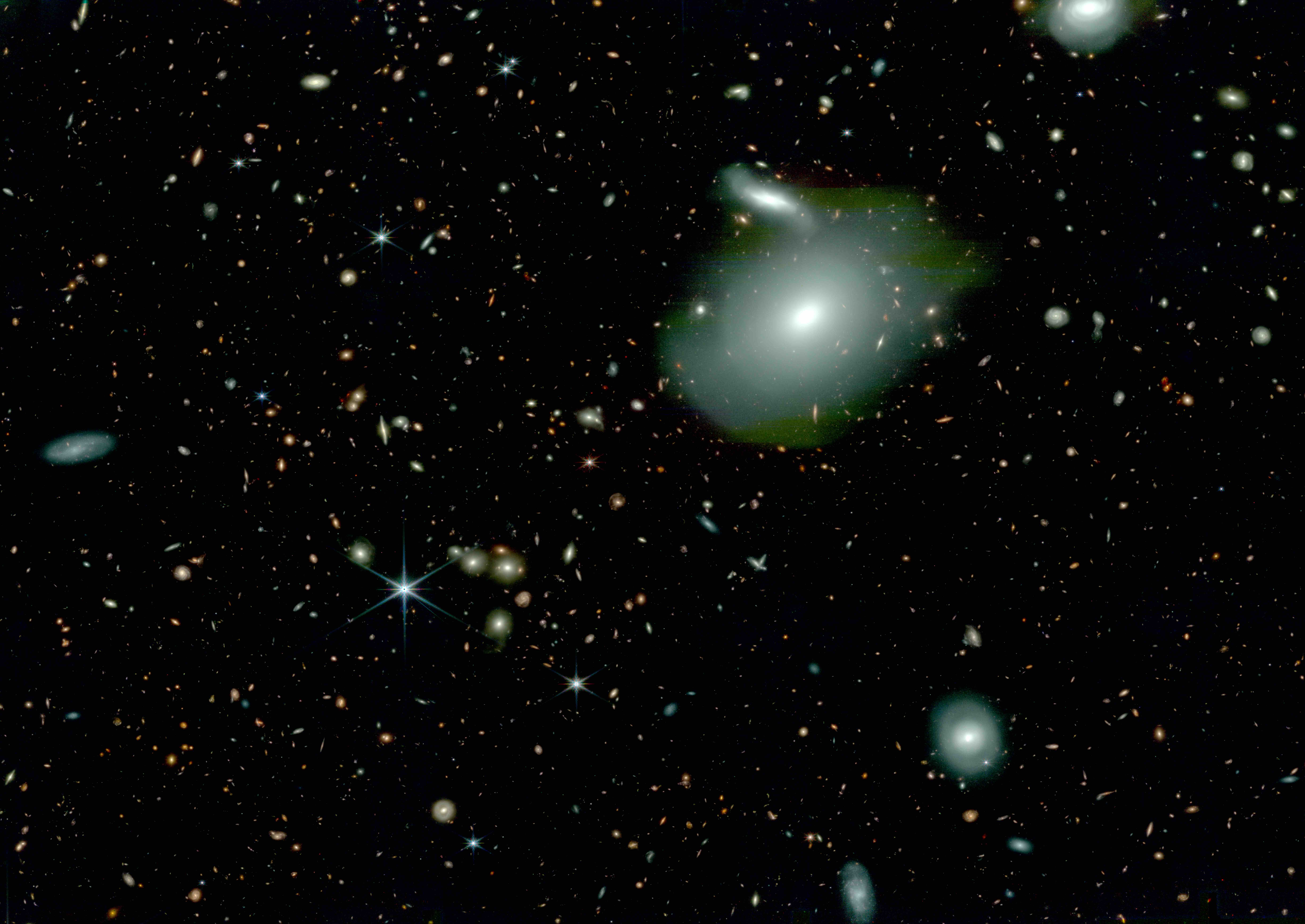JWST programs of High-redshift quasar fields
 We are part of the EIGER (Emission-line galaxies and Intergalactic Gas in the Epoch of Reionization) JWST/GTO team, which obtains mosaic observations with NIRCam in imaging and wide-field slitless spectroscopy mode of six high-redshift quasar fields (one is shown on the left). These phenomenal observations enable a whole range of exciting research: we study what galaxies are responsible for ionizing the universe, obtain precise measurements of the masses of the quasars' supermassive black holes, study the circumgalactic medium of some of the earliest galaxies, or search for the elusive stellar light of the quasar host galaxies.
We are part of the EIGER (Emission-line galaxies and Intergalactic Gas in the Epoch of Reionization) JWST/GTO team, which obtains mosaic observations with NIRCam in imaging and wide-field slitless spectroscopy mode of six high-redshift quasar fields (one is shown on the left). These phenomenal observations enable a whole range of exciting research: we study what galaxies are responsible for ionizing the universe, obtain precise measurements of the masses of the quasars' supermassive black holes, study the circumgalactic medium of some of the earliest galaxies, or search for the elusive stellar light of the quasar host galaxies. Excitingly, our work in the EIGER collaboration has recently been named one of the Top 10 Breakthroughs of the Year 2023 by Physics World.
We are also part of the ASPIRE (A spectroscopic survey of biased halos in the Reionization Era) collaboration, which similarly observes multiple high-redshift quasar fields with NIRCam imaging and grism spectroscopy. This program recently revealed a quasar embedded in the filamentary structure of the cosmic web, as well as feedback from growing supermassive black holes in the early universe.